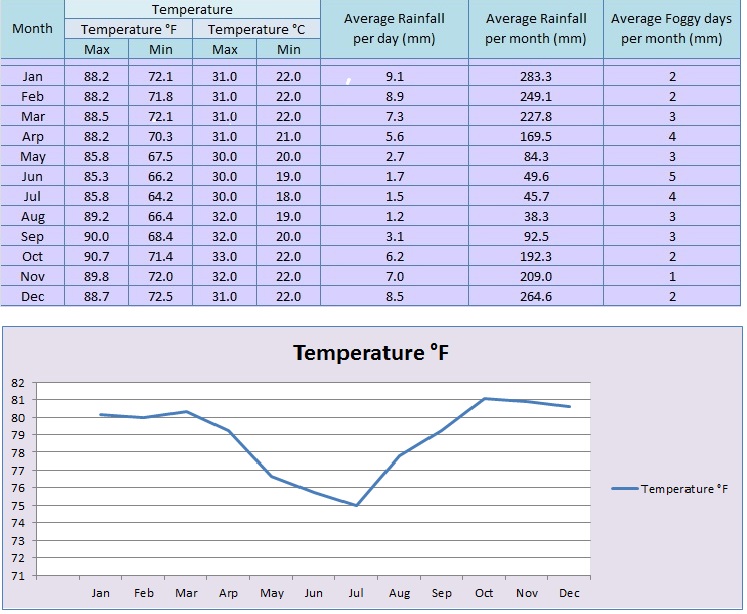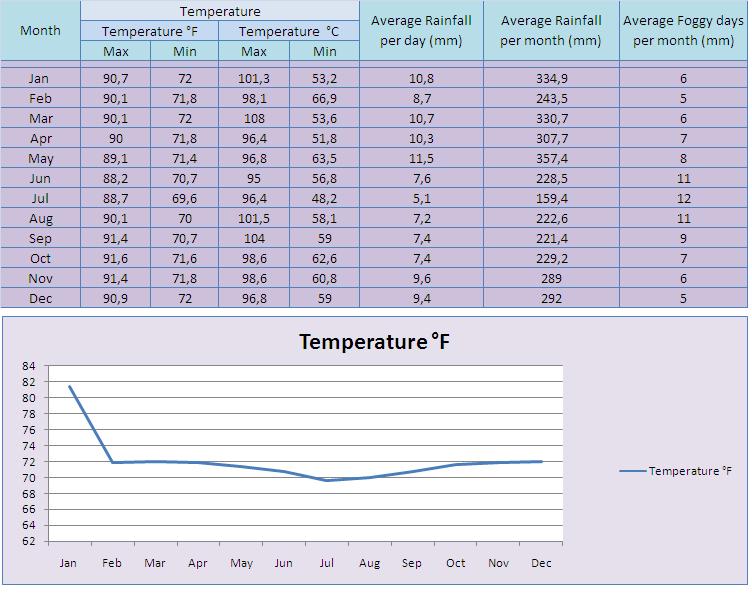![]() Weather conditions in the Amazon Jungle change depending on the time of the year, and it is important to understand how these changes could affect your visit, getting around and what wildlife you may see. In the southern-hemisphere the seasons are in reverse, with summer falling between December – February and winter through the months of June – August.
Weather conditions in the Amazon Jungle change depending on the time of the year, and it is important to understand how these changes could affect your visit, getting around and what wildlife you may see. In the southern-hemisphere the seasons are in reverse, with summer falling between December – February and winter through the months of June – August.
Weather in Peru
Peru is a vast country with three different topographical regions: the coast, mountain and rainforest. Each have very distinct climates. The coast, which is covered in beaches, bays and cities, is part of the desert. This region rarely sees rain and has a summer peak of January to March. If visiting the hot coast, we recommend travellers follow Peru Hop‘s route from Lima to Cusco, visiting some of the coast’s most attractive destinations such as Paracas, Huacachina and Arequipa.
The mountain zone and the andes region of Peru can be split into three from North to South, each section with mountains of different height and broadness. For travellers wishing to visit Machu Picchu, we recommend avoiding the months of January, February and March as these three are considered rainy season and cancellations may occur.
The jungle is the largest area of Peru, taking up a total of about 60% of the country. This area is generally split into two sections: high altitude and low altitude. High altitude is between 800m and 3500m and is considered to have a humid semi-tropical climate, while low altitude is between 80m and 800m and is considered to have a very humid tropical climate. The weather in the Amazon Jungle is discussed in more detail below.
Weather in Iquitos and Around
Iquitos and the nearby Pacaya-Samiria National Reserve have a unique climate in comparison to the rest of Peru’s Jungle regions. Temperature and rainfall in this area remain relatively constant throughout the year; with the rainfall increasing slightly on average during the months of March, April and May, and decreasing during June, July and August. Highs can reach 91 degrees Fahrenheit (32 Deg. C) during the day, and can fall as low as 71 degrees Fahrenheit (22 Deg. C) during the night.
Although the weather in Iquitos stays roughly uniform thought the year, it is important to know that there are also high and low water seasons. Water levels can rise by an incredible 23 feet towards the end of the each year (November – February), as higher levels of precipitation and melting snow from the surrounding mountains envelop the Amazon River Basin.
Weather in Manú Biosphere Reserve & Tambopata National Park
These two parks are located in the south of Peru, and follow a slightly different climate to Peru’s northern Amazon Jungle. In this region there are two seasons; the dry season during the months of May – September, and the wet season October – April. Temperature highs can reach 90 degrees Fahrenheit (32 Deg. C) during the day, and night time temperatures can fall to lows of 64 degrees Fahrenheit (18 Deg. C). During the wetter months there is an increased level of mosquitos in the jungle, and activities such as hiking are best done during the dry season. If you’re looking for tours or hikes during this season and want to see some of your options, take a look on the tour operator website www.findlocaltrips.com.

Our travel experts have put together many more pages of useful and informative information to help you plan your tour to Peru. Our Peru Guide includes sections on tourist attractions, adventure activities, hiking in the Andes, hotel reviews, restaurant information plus travel advice and our insider hints and tips. Visit our other Peru Guide pages now!











